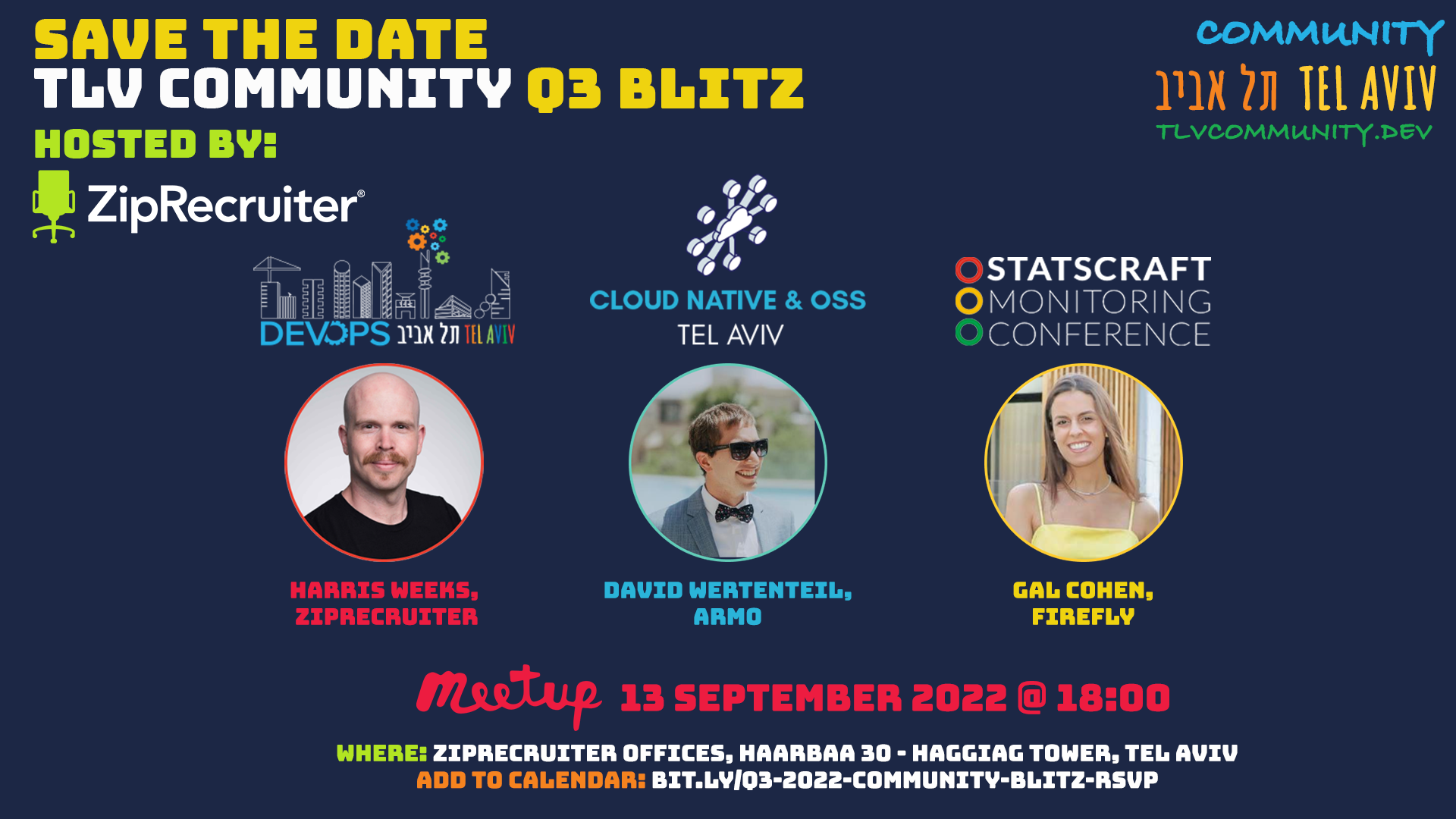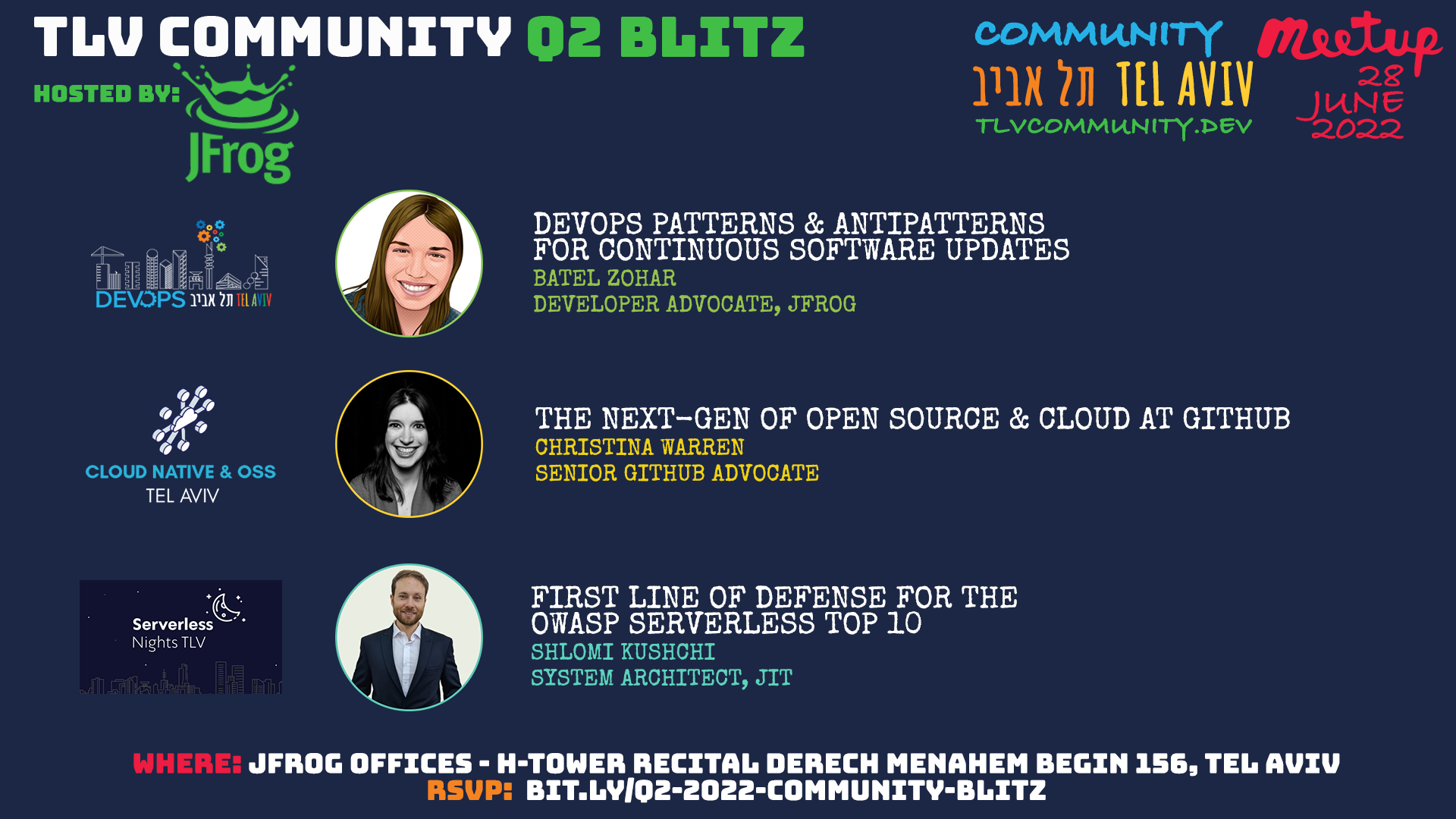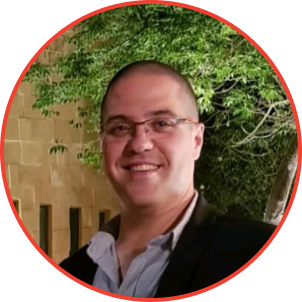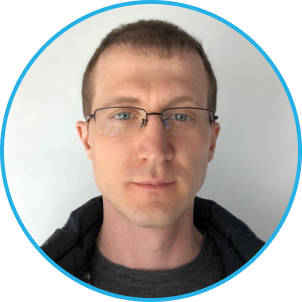DEV Community TLV LIVE EVENT
Watch our Live Events
Discord Server - LIVE CHAT
WHAT DO I DO NOW THAT I'M IN?
- You are welcome to ask questions about talks & interact with the speakers - you can drop your Q&A in the Live Event Channel.
- You can interact with other community members based on topic - there is a channel for each community, you can introduce yourselves at the watercooler, and you are more than encouraged to visit the additional channels where you can find community announcements, employment opportunities, and more.
TROUBLESHOOTING
 If you are seeing a yellow or red error in the box, you need to click on the "Login" button at the bottom left - and authorize "Widgetbot" and then you will be able to use the chat from within the website.
If you are seeing a yellow or red error in the box, you need to click on the "Login" button at the bottom left - and authorize "Widgetbot" and then you will be able to use the chat from within the website.
- If you are still seeing yourself as "UNVERIFIED" and are unable to access any channels that is because you have not accepted the Code of Conduct in the #code-of-conduct channel. Once you do so, you will receive your "Member" role, and will be able to participate in server chats.
Upcoming Community Events
April 30th @ 18:00
Hosted by: Otterize | HaMasger 35, 15th Floor, Tel Aviv (map) | Add to Calendar
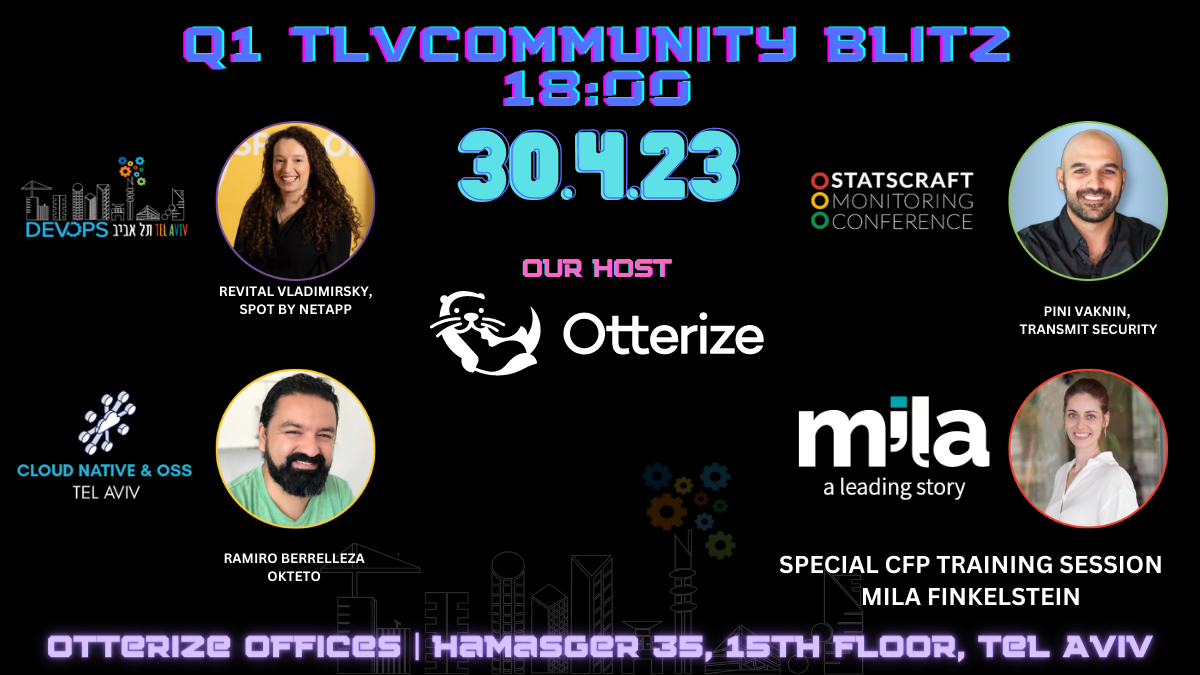
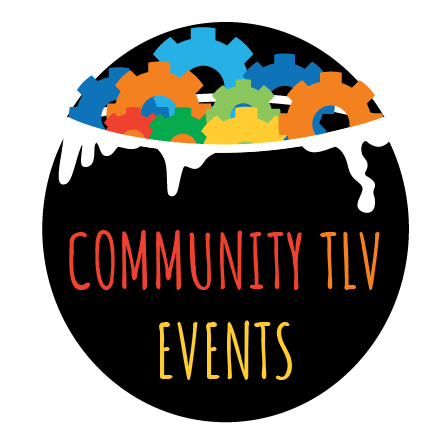
Previous Events
MARCH MEETUP - Q1 Community Blitz Hosted by Transmit Security
March 30th @ 17:45
Event RecordingHosted by: Transmit Security | Yigal Alon 94, Alon Tower 1, 8th Floor, Tel Aviv (map) | Add to Calendar
DEVOPS | Want to be part of a great platform engineering org?! You gotta be data driven!
Every modern platform engineering organization wants to embrace the notions of Fail Fast, Engineering Empowerment and Scale, but you cannot do any of those if you do not have the fundamentals of being able to make data driven decisions. This talk outlines the 5 essential steps to become a data-driven organization.

- Orit Yaron,
VP Cloud Platform, Transmit Security
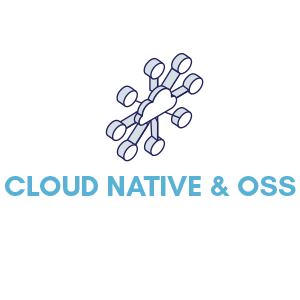
CLOUD NATIVE & OSS | 5 Open Source Security Tools All Developers Should Know About
The minimum viable security (MVS) approach, enables us to easily bake security into our config files, apps,
and CI/CD processes with a few simple controls built - and the great part? It’s easily achievable through
open source tooling.
In this talk we will focus on five critical security controls that will be integrated as part of the CI/CD
pipeline by leveraging some excellent open source tools, including: Bandit or SEMGrep for static application
security (SAST), Gitleaks to detect hard-coded or insufficiently secured secrets & dependency checks (SCA),
KICS for infrastructure as code (IaC) and OWASP’s ZAP for API and dynamic application security (DAST), in
addition to custom controls to ensure proper enforcement of MFA via Github Security. These controls will
provide a foundational framework for securing your applications from the first line of code.

- Aviram Shmueli,
CPO & Co-Founder, Jit
Aviram has more than 20 years of hands-on experience in engineering and has held senior managerial roles in both engineering and product management organizations, working for leading organizations such as CyberArk & SentinelOne. He always strives to create great products that users love. Thanks to his engineering background, Aviram is on a constant journey to create high-velocity product and engineering teams that work together as one team.
Aviram holds B.Sc & M.Sc in Computer Engineering, MBA and MA in Law.

STATSCRAFT | Debugging at Scale
As every developer has experienced, code rarely behaves the way you expect. Especially once it gets deployed
outside of our laptops to staging, to production, or to the cloud. Yet understanding how code behaves (and
why it behaves that way) is at the heart and soul of software development.
An important tool of the trade to solve these problems has been the debugger. Debuggers are our eyes and
ears into the blackbox of software applications, enabling us to see what’s really going on. With software
becoming a critical part of every business, and developers having a greater role in delivering high-quality
service, it’s more important than ever to use a modern debugger that works across hybrid, distributed
environments.

- Noa Goldman
Product Manager, Rookout
MAY MEETUP - Behind the Scenes of Scaling Up with Oribi


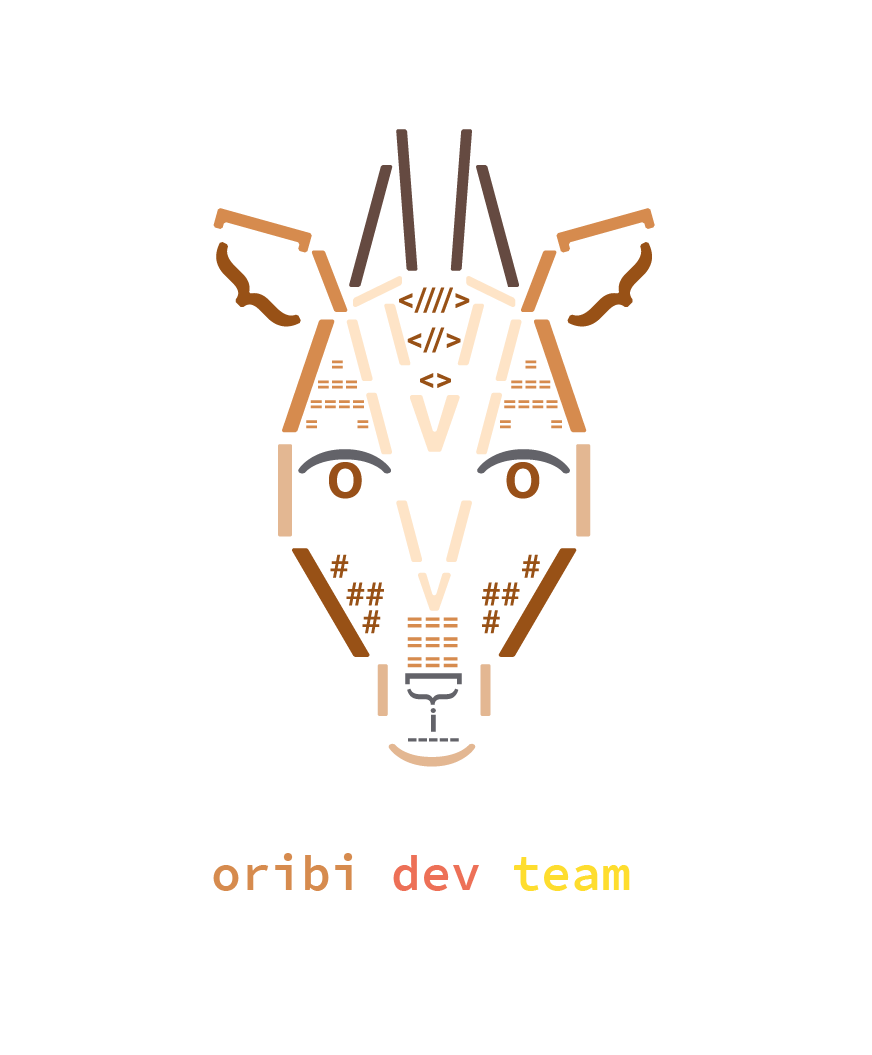
Production Jungle: Behind the Scenes of Scaling Up with Oribi | WATCH RECORDING
We'll be hosting the super awesome Oribi team for three excellent talks that will focus on typical challenges with transitioning from a startup to a scaleup and the impact on engineering. RSVP HERE
How to Ensure Data Integrity in a Complex Software Architecture
Asaf Halili, Senior Software Engineer
In this talk, I’ll describe the scalable & comprehensive solution we implemented to ensure data integrity in our large-scale microservice-based system.
Monitoring Streaming Pipelines at Scale
Ehud Winograd, Software Engineer
In this talk I’ll walk you through what worked for us, and what you should consider when monitoring your microservice-based ingestion pipeline.
He enjoys traveling, diving, and photography, and is happiest when he gets to combine all three.
Evaluating a Big Data Technology for Our Use-Case at Scale
Natasha Chernyavsky, Senior Backend and Big Data Software Engineer
And so, correctly weighing a technology’s capabilities (be it a database or a hybrid of solutions working together), its use-cases, performance and scale is a task worth mastering as a Software Engineer, though not always an easy one.
In this talk, I’ll share our journey of adding Spark and Presto to our tech-stack and architecture for one of our features, which points and evaluation criterias we took into account, which conflicts we encountered and how eventually we were able to go live with this solution with high confidence.
APRIL MEETUP - Kubernetes, Microservices, Production, Scale with Aerospike & Playtika


Cloud Native & OSS IL + Production Jungle | WATCH RECORDING
Kubernetes, Microservices, Production, Scale with Aerospike & Playtika | Event Details
Building Microservices for Real-World Scale
Zohar Elkayam, Senior Solutions Architect and a Technical Account Manager (TAM), Aerospike
In this session we will discuss the challenges of scaling up and down the database layer as part of the microservice architecture, and understand what solutions helped Playtika in scaling up their applications and games.
Playtika Microservices Architecture - The Pros & Cons
Zohar Elkayam, Senior Solutions Architect and a Technical Account Manager (TAM), Aerospike
MARCH MEETUP - Community Blitz Q1

DEVOPS | DevOps in Search of a Better Definition | WATCH RECORDING
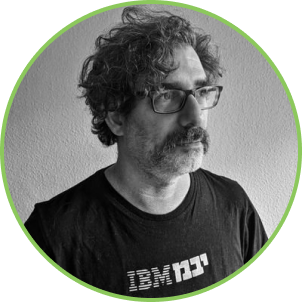
I want to argue that most companies are confusing methodologies and practices, pushing the transformation in the wrong direction. I want to use my experience as a DevOps consultant and as someone who studied history of ideas to define DevOps better.

CLOUD NATIVE & OSS | Building a Cloud Native Product in 2020 | WATCH RECORDING
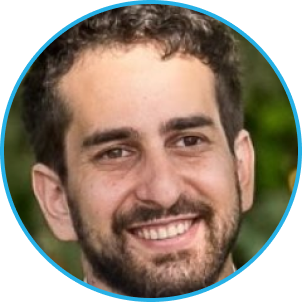
My story about kickstarting a cloud native company in 2020, built from scratch using the latest (and greatest) tools and processes. Some of these include k8s (what else?!), ci/cd, motoring tools, centralized logging, error tracking, etc. While building Komodor, we learned and changed quite a lot. In this talk, I will share some of the good decisions we have taken (go Hasura!), but also about the challenges we faced, what technologies and the processes we decided to ditch, and what lessons we learned during the past year.

STATSCRAFT | One Metric to Rule them All: Cycle Time | WATCH RECORDING
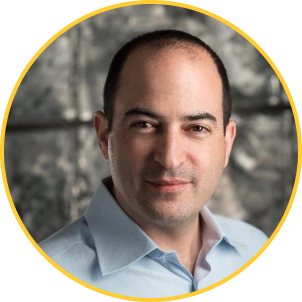
If you only measure one metric this is it: Cycle Time. It is probably the most underrated and least understood metric in engineering. Yet this is the metric that comprises the most important aspects to measure in your engineering process.
This talk will focus on how to fine-tune and get Cycle Time right. It’s a mix of improving your planning, interfaces between product and engineering, communication, review and quality gates and release mechanisms, essentially everything your engineering process encompasses. If you can game this metric, then you will realize huge gains for your entire dev process and engineering organization.
We recommend you join our Discord server to connect with friends from the community, and to receive updates from the event organizers.
- Join Discord HERE.
- It is recommended to use the desktop or mobile app.
- Once you have joined the server, you will be required to accept the Community Guidelines and Code of Conduct to be able to have access to the rest of the channels. Once you do so, the channels and participation in the community will be available to you.
Looking forward to chatting with you there!
